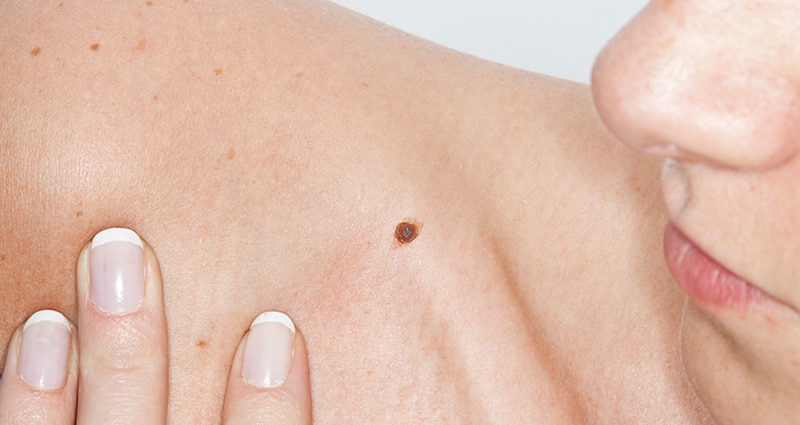This post was written by Curtis C. Chastain, MD, FACP, and was first published in February 2021.
Melanoma is the most dangerous type of skin cancer, and it often starts with a mole that doesn’t look quite right.
It’s responsible for nearly 10,000 deaths in the U.S. each year, but the good news is that it’s also one of the most treatable cancers when it’s caught early.
Most melanomas are caused by too much exposure to ultraviolet (UV) light, whether from the sun or tanning beds. They can show up in many colors, and they don’t always look like you’d expect.
The key to protecting yourself is knowing what to look for. Catching melanoma early, while it’s still limited to the top layers of skin, gives you the best chance of a full recovery. That’s why regular skin checks and paying attention to changes in your moles is so important.
Identifying Malignant Melanoma
There’s a simple tool called the ABCDEs of melanoma that can help you figure out whether a mole might be a problem. It only takes a few minutes to check your skin, but it could make a huge difference.
A = Asymmetrical
Most benign, or harmless, moles are even and balanced. If one side looks different from the other, that’s something to get checked.
B = Border
Benign moles have smooth, clear edges. Cancerous moles tend to have irregular borders. If the border isn’t smooth, you should get your mole checked out.
C = Color
Benign moles usually stick to one color. They can be brown, or black or pink, as long as they are one single color. Cancerous or pre-cancerous moles are multicolored. If the mole has more than one color, get it looked at.
D = Diameter
Imagine a pencil eraser. Moles smaller than the diameter of a pencil eraser are less likely to be cancer. If a mole is larger than the size of a pencil eraser, it doesn’t automatically mean it’s cancer, but it’s a good reason to have it looked at.
E = Evolving
The ABCD above is very important. However, if any mole on your skin shows signs of change, that can indicate a problem. A change in size or color for example might be the only sign that it is cancerous.
Why Early Action Matters
Melanoma can be life-threatening if it spreads, but early treatment often leads to excellent outcomes. That’s why regular skin checks at home and with your healthcare provider are a smart habit to build.
If you notice anything unusual, don’t wait. Get it checked. A quick appointment could make all the difference.
Schedule an appointment with one of our primary care providers to find out about screenings and skin cancer prevention.
More Useful Information About Protecting Your Skin
About Dr. Chastain
Curtis C. Chastain, MD, FACP, is an internal medicine physician focused on the primary care of men. He is a thought leader and frequently requested expert on men’s health, bringing his personal insights and 25 years of practice experience to this topic. Dr. Chastain is the founder and medical director of the Men’s Health Center at Our Lady of the Lake Regional Medical Center. To learn more about becoming a member of the Men’s Health Center, call 225-765-4400.




